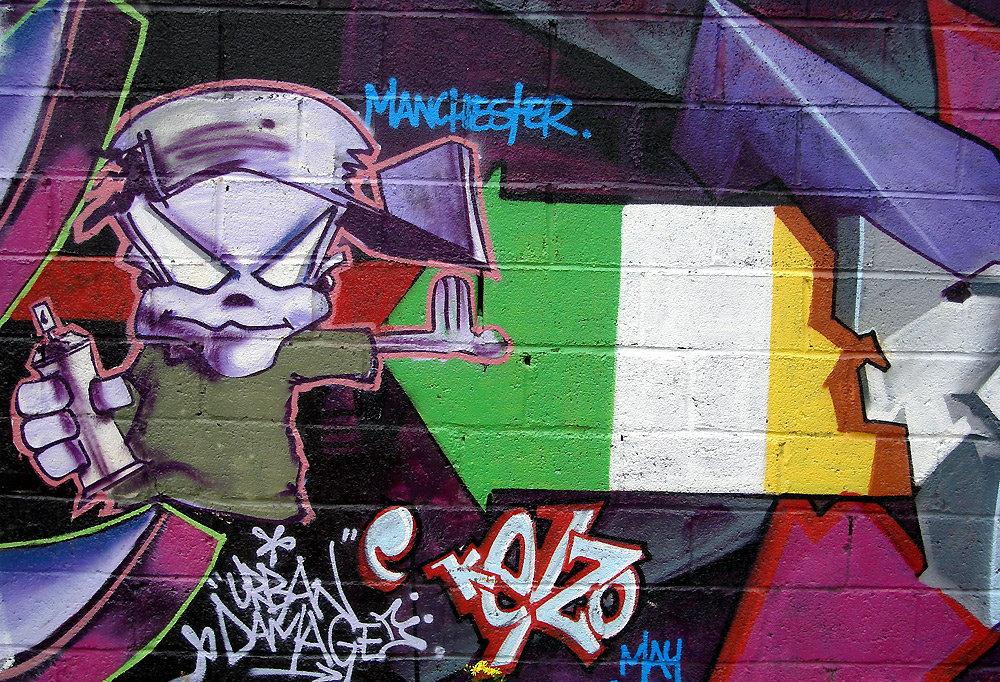Propaganda is defined as; the systematic propagation of official government policies through manipulative communications to the public. The propaganda may provide true or false information, but the information is selectively presented in a provoking style to have its maximum emotional effect. The term �propaganda� apparently first came into common use in Europe as a result of the missionary activities of the Catholic church. In 1622 Pope Gregory XV created in Rome the Congregation for the Propagation of the Faith. This was a commission of cardinals charged with spreading the faith and regulating church affairs in heathen lands.
In modern times it is argued that propaganda and public diplomacy are interrelated, with the former having a negative connotation. According to Joseph Nye Jr.�s definition Public Diplomacy is �building relationships with civil-society actors in other countries and about facilitating networks between nongovernmental parties at home and abroad�. On the other hand, Leonard Doob defines propaganda as the �control of individuals through the use of suggestion�regardless of whether or not the propaganda intends to exercise the control�, which suggests an element of mind engineering that is absent in public diplomacy.
Propaganda posters appeared in earnest during World War One (1914-18) when each of the belligerent governments used them not only as a means of legitimizing their engagement to their people, but also as a means of enlisting men, and selling war bonds in order to finance the military campaign. Perhaps out of a sense of patriotism, many of the graphic designers in the bellicose countries believed in the messages they were delivering, and used a verity of modern techniques in their designs.
Modernist art movements were influencing propaganda posters from the early 20st century. A good example of the avant garde movement influence is a famous piece Beat the Whites with the red wedge - by El Lissitzky, in 1920 which used various geometric color surfaces in an abstract fashion. Lissitzky used this subtle platform to suggest in a blunt propaganda massage.
This early Russian revolutionary poster, "Believe, will celebrate the hundredth anniversary," is one of the many posters that used modernism as was practiced by Fernand L�ger , Marc Chagall and others.
The Bauhaus School of Design
Beat the Whites with the red wedge - 1920
Figurative Cubism was introduced by Strakhov-Braslavskij A. I. in his poster "Liberated woman � build up socialism!", in 1926 and by V. Kulagina's poster called "To Defend USSR" , in 1930. The quality of the artistic works in these early posters reveals that these creative artists were trying to use propaganda platform as a conduit for the realization of their aesthetic inspiration. Perhaps in those early years of Soviet Union these artists still had a degree of conviction in the legitimacy of their cause, something that was lacking in the propaganda posters of the later years, Beat the Whites with the red wedge - 1920
Strakhov-Braslavskij A. I, Liberated woman � build up socialism! , 1926
V. Kulagina, ; To Defend USSR, in 1930.
This ambitious poster celebrates Fascism in strictly modernist flavor. The Mostra della Rivoluzione Fascista was held in Rome in 1933, to commemorate the tenth anniversary of the coup that made Mussolini absolute ruler of Italy. In the words of the catalog, the exhibition aimed to to express
... the atmosphere of the times, all fire and fever, tumultuous, lyrical, glittering. It could only take place in a style matching the artistic adventures of our time, in a strictly contemporary mode. The artists had from Il Duce a clear and precise order; to make something MODERN, full of daring. And they have faithfully obeyed his commands.
Magda Koll, Four Rest at Homes Behind the Front for Soldiers from Bremen, 1915. The poster message that; humanity is alive and well, was a German response to the Allied allegation of German barbarism in the first world war. The minimalist design of the poster was quite innovative at the time.
Ludwig Hohlwein,. Red Cross Collection 1914. Collection in support of volunteer nursing in the war. 1914,
Ludwig Hohlwein,. Red Cross Collection 1914. Collection in support of volunteer nursing in the war. 1914,
Images of women have been prominent in the war poster propaganda as well as in other ideologically driven posters. The images of motherhood have been exploited to symbolize national security, sanctity of homes, duty to country and duty to family. Many of the propaganda posters portrait femininity as passive and in need of protection. Some posters emphasize the patriotic mother who is willing to sacrifice her sons to the war effort. The propaganda has been used to provoke a nationalistic attitude towards the motherland, a place that is pure, noble and different. In the classic war propaganda campaigns of the 20th Century, women as victims of rape often symbolize the brutality of the enemy as well as the despoiling of the motherland's culture and harmony. Ironically, however, women are sometimes portrayed as potential traitors or unwitting accomplices by virtue of their supposed tendency to gossip. Through this cultural stereotyping, an atmosphere of suspicion is created and domestic surveillance becomes embedded into the national consciousness as one of the justified costs of war.
Soviet propaganda posters of the 1920s and the 1930s often portrayed women as larger-than-life figures, reflecting their new economic role and socio-political power and importance. Women equality was enshrined in the Soviet constitution. To realize this ideal, there was a need to set up various institutions that would allow women to become engaged fully in the productive sectors of the economy. Thus, the government invested heavily on various child care facilities, and large-scale canteens to allow them to enter into the workforce. In the propaganda posters, the liberated Soviet women were depicted in various productive roles, although in reality, the gender inequality persisted, and during the whole Soviet era no woman of consequence did emerge at the helms of power.
�Women workers take up your rifles� - A revolutionary poster of 1917.
In contrast, the ideal role for a woman in Nazi Germany was to work at home and be a mother. The Winterhilfswerk, or Winter-Help-Work of the German People, was founded by the Nazis after Hitler was appointed Chancellor. It was their official winter relief charity that was operating under Reich propaganda minister Joseph Goebbels . Hitler introduced the fund in a speech in September 13th, 1933, in which he claimed, "This great campaign against hunger and cold is governed by this principle: We have broken the international solidarity of the proletariat. We want to build the living national solidarity of the German people!" The Winter Fund's main aim was to propagate and popularize the Nazi idea of a national community. The focus of the propaganda was to create an image of the party as a caring institution that was concerned about the welfare of the German people.Support the Relief Organization Mother and Child, Goebbels in his inauguration address of the Mutter und Kind (Mother and Child) organization, in February 24, 1934 stated; "Mother and Child are the pledge for the immortality of the nation". This was to address one of Hitler's major concern over the falling German birth rate. The Organization sought to increase the birth rate by assisting mothers. The effort was primarily geared to help the mother in the home.
A People that Help Themselves, the Winter Fund poster, 1933, projects the image of a "genetically healthy" family, as the racial nucleus of the nation. The "natural" duty of women, according to the National Socialists' doctrine was to bring as many racially pure and healthy children into the world as possible, in order to expand the "Aryan race". This was an effort to increase the birth rate significantly. Artists were encouraged in this context, "to show at least four German children when they were depicting a family " .
NSDAP (The National Socialist Party ) will save the people�s community; Fellow-Countrymen, if you need advice and help, apply at the local branches. 1938.
Jin Meisheng, The seeds have been well selected, the harvest is more bountiful every year, 1964.
Women in the Chinese propaganda posters are also depicted as fully equal to men, but like the Soviet Russia, they appear totally absent in the leadership roles.
Jin Meisheng, The seeds have been well selected, the harvest is more bountiful every year, 1964.
Women in the Chinese propaganda posters are also depicted as fully equal to men, but like the Soviet Russia, they appear totally absent in the leadership roles.
Li Mubai, Jin Xuechen, Chairman Mao meets with model workers, 1964. It appears that the male model workers are more engaged in their discussion with the Chairman. The woman is placed standing at the back and just admiring the wise and handsome leader!
Most of the times women jobs are depicted as menial agricultural works, like this poster by
...While men are doing serious industrial jobs, as this poster by Li Zongjin, called "Study the advanced production experience of the Soviet Union, struggle for the industrialization of our country" in 1953 shows. In the early years of the People's Republic of China, the Soviet Union sent many experts to help. Here a Russian industrial expert is shown giving advice. The text at the top is a handwritten announcement of a Russian exhibition.
Most of the times women jobs are depicted as menial agricultural works, like this poster by
Wu Shaoyun, "We sell dry, clean, neat and selected cotton to the state, 1958.
...While men are doing serious industrial jobs, as this poster by Li Zongjin, called "Study the advanced production experience of the Soviet Union, struggle for the industrialization of our country" in 1953 shows. In the early years of the People's Republic of China, the Soviet Union sent many experts to help. Here a Russian industrial expert is shown giving advice. The text at the top is a handwritten announcement of a Russian exhibition.






After the first world war practically every government resorted to intense propaganda campaigns for capturing the hearts and the minds of the masses. In particular, the extreme right in the form of fascism and the extreme left in the form of communism found posters a potent tool in their propaganda campaigns. Here are two examples from Nazi Germany, and Soviet Russia.

During the World War II posters were used for a variety of purposes by all sides. They were used to encourage men to sign up and to encourage women to support their men by working in the factory or by buying war bonds.
It is estimated that the U.S. produced more than 200,000 different posters during the second war, more than any other country. Many of the US war posters were designed by the artists who participated in various competitions to produce a design in support of the war. Many corporations produced posters that while supporting the war was also promoting their products. Many corporations were allowed to treat their war propaganda posters as business expenses.

According to a fascinating article by Steven Heller :
Hitler�s fervent desire to attain propaganda supremacy among nations was a direct result of the German defeat in World War I and his belief that superior allied propaganda trumped Kaiser Wilhelm II�s meager output. Through intensive barrages of posters and other visual media, Britian and America effectively defamed the �Hun� in the eyes of the world, portraying the Kaiser�s military as callous blood-thirsty beasts. The German counterattack was tepid at best. �The Germans were sent into this mighty battle with not so much as a single slogan,� wrote Eugen Hadamovsky, the Nazi propaganda expert and Josef Goebbels� deputy, in Propaganda and National Power (1933, reprinted by Arno Press in 1972). So when the Nazis came to power, Hitler commissioned a book titled Das Politische Plakat: Eine Psychologische Betrachtung by Erwin Schockel (Franz Eher Verlag, published in 1939), a psychological assesment of English, American, French, Russian and German political posters. It was a handbook for German propagandists and others. ...
Das Politische Plakat was one in a series of textbooks and manuals issued through the Reichspropagandaleitung, based in Munich (Reich Propaganda Office of the Nazi Party, a separate department from the more powerful Berlin-based Ministry of Propaganda and Enlightenment) for use by party members only. Schockel�s message was clear: powerful propagandistic graphics must be simple and memorable.


Dmitry Stakhievich Orlov, who was known by his artistic name Dmitry Moor revolutionized the art of propaganda poster in the Soviet Russia. His dramatic treatment of class warfare, with haunting contrasts of then and now, enemies versus heroic allies, imperialism against workers' struggles, to which he added a simplistic slogan: Death to World Imperialism.
Many of Moor's and Deni's posters were restricted to black and red. Red could be used to identify revolutionary elements, particularly flags, worker's shirts and peasant blouses. Black was used for the main drawing and as a solid colour for the clothes of capitalist and priest. His work dominated both the Bolshevik Era (1917�1921) and the New Economic Policy (1921�1927).

After the relative failure of Mao Zedong's "Great Leap Forward" campaign to a modernize China, based on the Stalinist model of industrialization, he and his wife's Jiang Qing initiated, the Cultural Revolution. Millions of mainly urban youths, organized as "Red Guards" were mobilized and sent out into the countryside to propagate Mao's ideology of a new society and to fight the "Four Olds" (old ideas, old culture, old customs and old habits). Posters were the most practical means of propaganda, since most people, particularly in the rural areas, were illiterate, and there were very few radio or television. Posters were easy and cheap to produce. The total output was several billion over a period of 30 to 40 years.

According to the BBC, Switzerland's biggest city, Zurich, did allow the use of this controversial poster which urges a ban on the building of minarets in the country. The poster shows a woman dressed in a burka in front of black minarets standing on a Swiss flag. But Zurich city council said campaign posters were protected by free speech. The advert was used by the far-right Swiss People's Party (SVP) ahead of a referendum on whether to ban the building of new minarets. At the time this poster was created, there were only four minarets in all of Switzerland. Apparently, the woman has forfeited her human right to choose for herself what she wants to wear. .
Occupy Wall Street is a 21 century movement outside the old ideological frameworks of socialism, capitalism and all other "isms" in between. It is an statement in protest that the voices of "We the People" have been silenced for a long time, and finally, in 2008, the greedy Wall Street bankers nearly ruined the country. They were then bailed out by corrupt politicians, and soon the greedy bankers were back at it again. Meanwhile, average Americans who could not find a job were getting thrown out of their homes. The U.S. political system has become corrupt. Big corporations, lobbyists, and lawyers are taking advantage of the taxpayers.
On August 4, 1822, James Madison, one of the Founding Fathers of the US confederation wrote to W. T. Barry ;
A popular government without popular information, or the means of acquiring it, is but a prologue to a farce or a tragedy, or perhaps both. Knowledge will forever govern ignorance, and a people who mean to be their own governors must arm themselves with the power which knowledge gives.
For far too long the governments of elites, no matter being popular or unpopular, have operated "without popular information," Occupy Wall Street and all the other cities around the globe aim to provide the governments with "popular information". People were told that Capitalism provides the most efficient way for generating wealth and its distribution. But, they are not told that in a true capitalism, there are no multinationals and monopolies. All businesses are small, operating in a level playing field, where the information is transparent, and available to everybody. A system in which there is no insider trading, no favoritism towards the big oil, the big pharmaceutical, the big banks, and so on.
In that system, no sociologists like Douglas Massey can find a phenomenon like in the United States that; the income gap between the richest and poorest has dramatically widened since the 1970s, resulting in a U-curve of increasing inequality, and no Census Bureau can find that;
the number of Americans living below the official poverty line, 46.2 million people, was the highest number in the 52 years the bureau has been publishing figures on it.As Barry C. Lynn, director of the Markets, Enterprise, and Resiliency Initiative, a senior fellow at the New America Foundation, in his book; Cornered: The New Monopoly Capitalism and the Economics of Destruction explains;
our political economy is run by a compact elite that is able to fuse the power of our public government with the power of private corporate governments in ways that enable members of the elite (to freely decide) who wins, who loses, and who pays.and this is why the billionaire, Warren Buffett, complains that
My friends and I have been coddled long enough by a billionaire-friendly Congress. It�s time for our government to get serious about shared sacrifice.
Perhaps more importantly as Nicholas D. Kristof has argued in his New York Times op-ed column, Crony Capitalism Comes Home on October 26, 2011:
... In recent years, some financiers have chosen to live in a government-backed featherbed. Their platform seems to be socialism for tycoons and capitalism for the rest of us. They�re not evil at all. But when the system allows you more than your fair share, it�s human to grab. That�s what explains featherbedding by both unions and tycoons, and both are impediments to a well-functioning market economy...Capitalism is so successful an economic system partly because of an internal discipline that allows for loss and even bankruptcy. It�s the possibility of failure that creates the opportunity for triumph. Yet many of America�s major banks are too big to fail, so they can privatize profits while socializing risk.
The upshot is that financial institutions boost leverage in search of supersize profits and bonuses. Banks pretend that risk is eliminated because it�s securitized. Rating agencies accept money to issue an imprimatur that turns out to be meaningless. The system teeters, and then the taxpayer rushes in to bail bankers out. Where�s the accountability?
In fact, the Founding Fathers, like Thomas Jefferson and John Adams were giving plenty of warnings about this state of affairs. Jefferson wrote to a friend in 1816:
I hope that we shall crush in its birth the aristocracy of our monied corporations, which dare already to challenge our government to a trial of strength, and bid defiance to the laws of our country.
Abraham Lincoln, the first Republican President in a November 21, 1864 letter to Col. William F. Elkins foresaw the problem and wrote:
I see in the near future a crisis approaching that unnerves me and causes me to tremble for the safety of my country. As a result of war, corporations have been enthroned and an era of corruption in high places will follow, and the money power of the country will endeavor to prolong its reign by working upon the prejudices of the people until all wealth is aggregated in a few hands, and the Republic is destroyed.
President Grover Cleveland foresaw that Corporations "are fast becoming the people�s masters" in 1888. He wrote:
As we view the achievements of aggregated capital, we discover the existence of trusts, combinations, and monopolies, while the citizen is struggling far in the rear, or is trampled beneath an iron heel. Corporations, which should be the carefully restrained creatures of the law and the servants of the people, are fast becoming the people�s masters.
Even if in the words of Theodore Roosevelt, in his Union Address of 1902, "these big aggregations are an inevitable development of modern industrialism, and the effort to destroy them would be futile" we still need to bring them under control and stop their corruptive influences. In the words of president Roosevelt:
Our aim is not to do away with corporations; on the contrary, these big aggregations are an inevitable development of modern industrialism, and the effort to destroy them would be futile unless accomplished in ways that would work the utmost mischief to the entire body politic. We can do nothing of good in the way of regulating and supervising these corporations until we fix clearly in our minds that we are not attacking the corporations, but endeavoring to do away with any evil in them. We are not hostile to them; we are merely determined that they shall be so handled as to serve the public good. We draw the line against misconduct, not against wealth.
And now "We the People" are speaking through the action which is articulated in these posters.
Go to the next chapter; Chapter 30 -- Posters and Cult of Persnality
------------------------------------------------------------------------------------
This work is licensed under a Creative Commons Attribution-No Derivative Works 3.0 Unported License.



































































